May Day (May 1) marks the return of Spring in the Northern Hemisphere, with origins in ancient pagan agricultural rituals to ensure fertility, handed down from the Egyptians, Greeks, and Romans. Later permutations included the Celtic festival of Beltane and Germanic festival of Walpurgis Night, here outlined by the blog Medievalist Errant.
May Day falls exactly half a year from All Saints Day (November 1), and cross-quarter day with pagan overtones. Today, this ancient festival survives, including gathering wildflowers and decorating a May tree or Maypole, around which people dance, and some use it for political protest in association with International Workers Day.
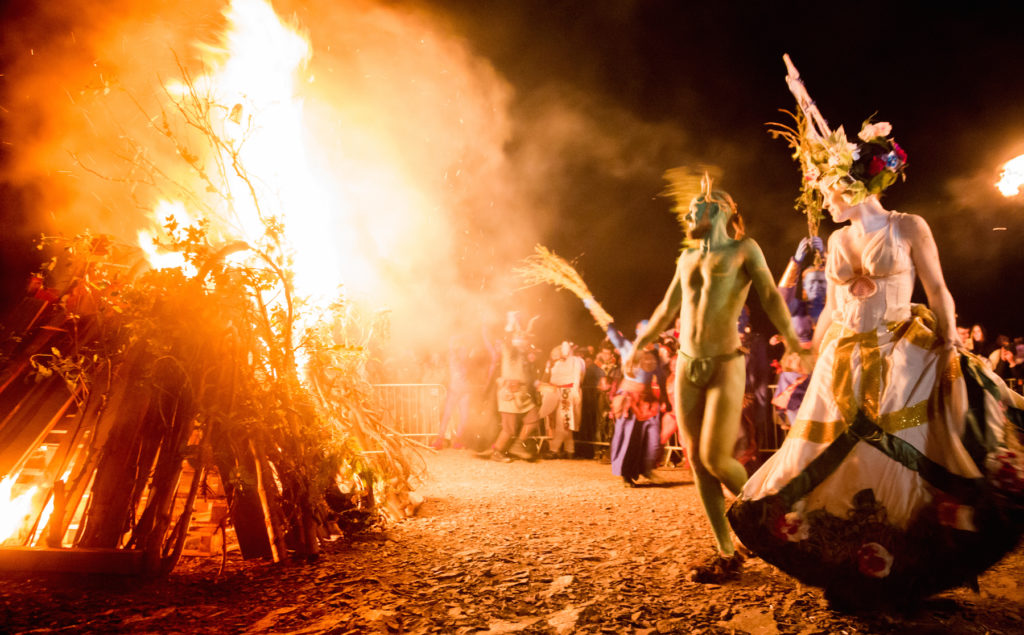

May Day and Pagan Fertility in the Middle Ages
May Day is one of those holidays that seems medieval, even ancient; the customs of flowers and fertility rites definitely feel like they go back a long time, and if they don’t, they should. This is the difficulty with settling down to write about medieval May Day celebrations, because so much of what we associate with the holiday is really only traceable back as far as the Tudors.
In the Seventeenth Century, May Day, with all its fun-loving festivity, was heavily censored by the Puritans, who disapproved of so much dancing and merry-making and banned it. Later in that century, when fun started being allowed again, some ‘traditions’ seem to have been reconstructed from vague memory and what people thought the past ought to have been like.
STORY: Christmas Trees, Solstice Rituals, and the Garden of Eden
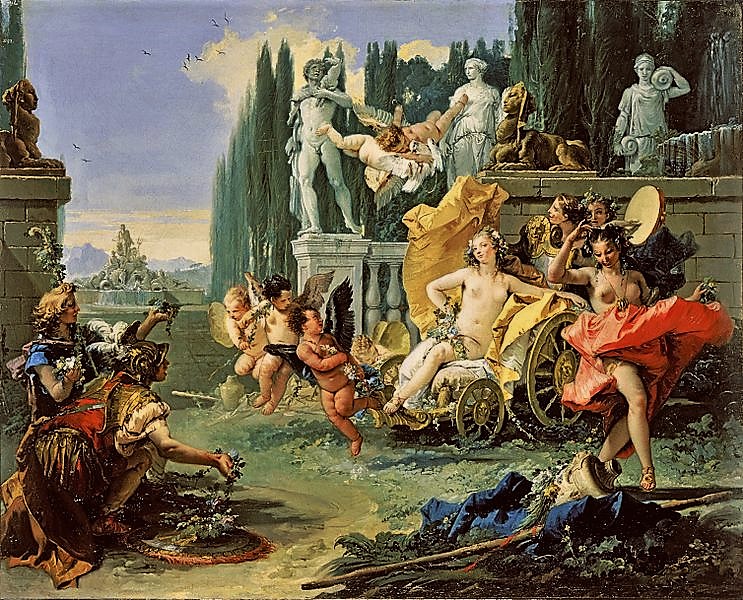

The Ancient World
However, today we’ll try to trace some of the things that really are medieval or older, beginning with the Romans and the Celts. The Roman Pagan-Fertility-focused festival of Floralia took place for six days beginning the 28th of April, and this seems to be the origin of some of the things we associate with May Day began: wearing bright colors, drinking a lot, and a certain sexual permissiveness are mentioned by Ovid and Juvenal. This celebration was dedicated to Flora, the goddess of flowers, which was an idea that appealed to the Renaissance humanists when trying to recreate some good Classical festivals.
This coincided with the Gaelic festival of Beltaine. The word itself, in Q-Celtic languages, comes from a Proto-Celtic word for ‘bright fire’, which seems to have been the chief attraction. (The Welsh word, meanwhile, is Calen Mai, which comes directly from the Roman calendar and the Latin for the first of May.) It started the night before, as do all ancient Celtic festivals since they figured time in nights rather than days. The Ninth-Century Irish glossary Sanas Cormaic says the Druids made the fires while casting ‘great incantations,’ and that they were supposed to ward off disease; people may also have danced ‘sunwise’ around them. There is, at least, archaeological evidence of large fires at quite a few places in Ireland. It seems cattle would be driven between two fires, which seems fitting for two reasons: that ancient Ireland counted wealth in cattle, and that Beltaine, like Samhain six months before, was a liminal border-day when the fairies, whose world overlaid the mortal one, were even closer then usual.
There seems to have also been an old Germanic festival that also involved bonfires, which was later merged with the feast of the 8th-century German Saint Walpurga to become Walpurgisnacht. In the early modern era this was expanded even more as local anxiety over witches turned it into a “witches’ sabbat,” and by now has mostly been replaced by Easter fires.
Basically, early agrarian societies all liked the part of the year when enough plants started to grow that you got new food to eat, and you could let the cattle out of your house and send them off to grazing land.
Walpurgis Night (in German folklore) the night of 30 April (May Day’s eve), when witches meet on the Brocken mountain and hold revels with their gods…”
Brocken is the highest of the Harz Mountains of north central Germany. It is noted for the phenomenon of the Brocken spectre and for witches’ revels which reputedly took place there on Walpurgis night.
The Brocken Spectre is a magnified shadow of an observer, typically surrounded by rainbow-like bands, thrown onto a bank of cloud in high mountain areas when the sun is low. The phenomenon was first reported on the Brocken.
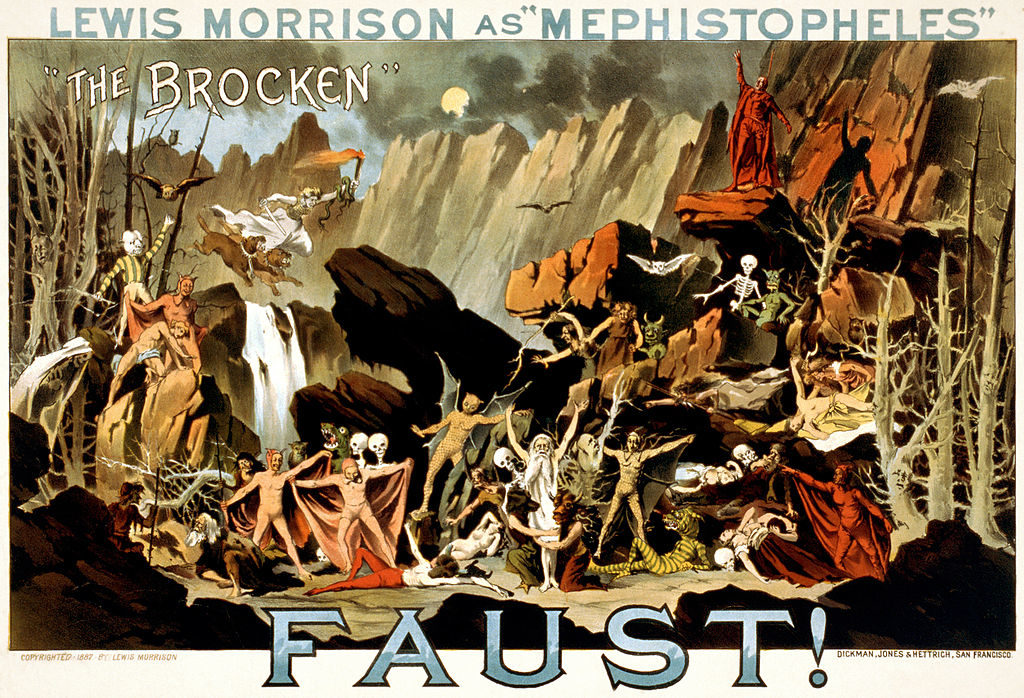

The Middle Ages
Along with the new food to eat and the cattle grazing, a useful thing about spring festivals was that if you were a villager, rather than a noble with a great hall, you couldn’t really have huge communal feasts during the winter. The only building in a village likely to be big enough was the church, and along with being hard to heat, people tended to shy away from using those for secular celebrations. When the weather started turning warmer, they could all meet outside on the village green and save on heating bills.
By the Middle Ages, some of what had once been the Pagan Fertility Ritual Floralia, Beltaine, and other early-spring festivals had been pulled into the liturgical calendar and applied to the Christian celebration of Whitsun, or Pentecost. This was one of three weeks of holiday for the medieval worker, and was marked by feasting, dancing, and parties.
The Welsh tale of Geraint (and various other versions of the same story) opens with a description of Arthur’s Whitsun feasting, and all the churches necessary to fit everyone in the court so they can all hear Mass. It was also one of the three times of the year, along with Christmas and Easter, when vassals were given new clothes (a ritual I talked more about at Easter).
There seems to have been some tension in the ranks of the church between celebrating Pentecost and the more secular traditions involved in ‘Bringing in the May.’ In 1240, the Bishop of Lincoln complained about his priests taking part in this highly questionable custom, and other similar complaints exist through the Thirteenth and Fourteenth Centuries.
In Saint Andrews in Scotland, students and tutors at the then-young university were forbidden from ‘bringing in the May’ while disguised as monarchs; the practice was denounced as ‘useless and dangerous’ which, let’s face it, is probably why they were doing it. Various churchmen complained about the festivities from 1220 onward, but not-very-mysteriously stopped in the Fifteenth Century when someone worked out that if the church actually sponsored these things, they could keep an eye on everything and make some money at it. Like the Hocktide kidnapping game, the paris ale used local custom to bring in some money to the local church.
STORY: Spring Equinox, the Eostre Bunny, and Other Wiccan Mysteries
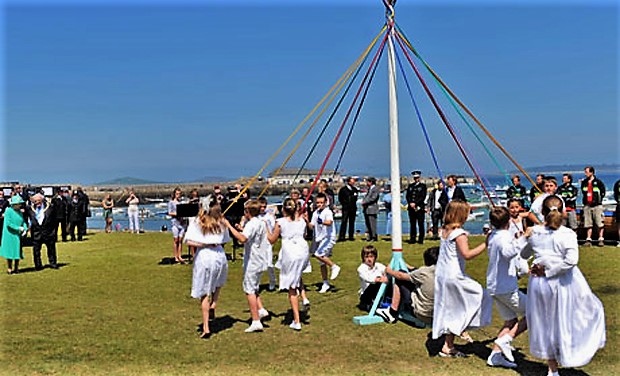

Bringing in the May
So what exactly did this ‘Bringing in the May’ business entail? In most places, people gathered flowers and branches to make garlands or wreaths. Chaucer mentions woodbine and hawthorn in the Knight’s Tale, while sycamore was more common in Cornwall and birch in Wales. The flowers were then awarded as prizes or given as gifts to friends and neighbors. Washing one’s face in the morning May Day dew was supposed to bring youth and radiance to the complexion.
And furth goth all the Court, both most and lest,
To feche the floures fressh, and braunche and blome;
And namly, hawthorn brought both page and grome.
With fressh garlandes, partie blewe and whyte,
And thaim rejoysen in their greet delyt.— Chaucer (but not written by him) 1561
The most enduring image of a May Day celebration is the Maypole, painted and be-ribboned and standing on the village green. While the earliest recorded evidence of it is from a Welsh poem by Gryffydd ap Adda ap Dafydd in the mid-fourteenth century describing a maypole in Llanidloes, it seems otherwise to be English, rather than Celtic, in origin and to have migrated to the Welsh Marches from English settlers. A number of theories exist as to their original significance, some less likely and more outlandish than others, but no definitive explanation has presented itself. From the early 1400s there are records of a number of English villages paying for platforms and ribbons to display and decorate maypoles.
The crowning of a May Queen (or later more commonly a May King), seems to have really taken off in the early modern period, but there is evidence of it earlier. The Bishop of Worcester complained about a May beauty contest that sounds suspiciously like such a ceremony in 1240, and there are other, slightly less disapproving references in manuscripts in 1303 and 1306. After about 1450, summer kings seem to have been more common than summer queens, and there are only a few instances of there being one of each.
In later days, enthusiastic re-constructionists formed a tradition around these figures, that in prehistoric times they had been symbolically married and then executed; the plot of The Wicker Man comes from this. While the ancient Celts were said by Caesar and Tacitus to have sacrificed people in large wicker effigies, and mistletoe found in the stomach of certain bog bodies means death likely occurred in the spring, this is a long way from actual evidence of a murderous fertility ritual. It definitely isn’t related to anything in the actual Middle Ages, where the duties of the Summer crown seemed to mostly involve ‘holding court’ over local mummers, musicians, and performers.
After about 1470, pantomimes of Robin Hood stories became a popular part of the celebration. Prior to that, a figure called the Abbot of Bon Accord, similar to the Lord of Misrule who presided over Christmas festivities, could be named. Later this could be one of Robin’s merry men–first Little John, and eventually ‘Maid’ Marian, who outlasted all the rest of the characters as a man in dodgy drag.
Finally, there would be Morris dancers, a tradition which can be traced back to the middle of the fifteenth century, when a troupe is recorded as being paid, but does seem likely to have been older.
Other Interesting May Day Rituals
In Cornwall, a tradition called the ‘Obby ‘Oss festival takes place on May Day. The festival in Padstow claims to be the oldest fertility ritual in Britain, though the records of this particular celebration only go back as far as 1803. The concept, however, can be traced back earlier; a hobby horse is mentioned in a text in 1504. Its similarity to the Welsh winter festival of the Mari Lwyd does suggest a distant Celtic origin, but because neither one can actually be traced past the late middle ages, it’s impossible to say for sure.
Finally, the beginning of May, and the association of spring in general with fertility and sex, was popular with the troubadours of medieval France. One of the more famous songs is by the Twelfth-Century troubadour Raimbaut de Vaqueiras and known as Kalenda Maia–the calends (first) of May–after its opening line. Here is a recording.
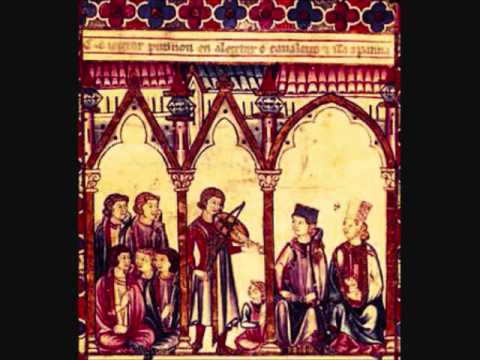
Watch this video on YouTube
If you want to have a proper medieval May Day, it’s probably a bit late to plan a whole village celebration if there isn’t one already–though there are plenty of them planned, and a bit of time on Google ought to find one close to you. Otherwise, get dressed up, wash your face in the morning dew, leave a surprise bouquet of flowers for someone special, and find a sunny spot to crack open a pint and toast the coming of spring!
Updated 31 January 2021

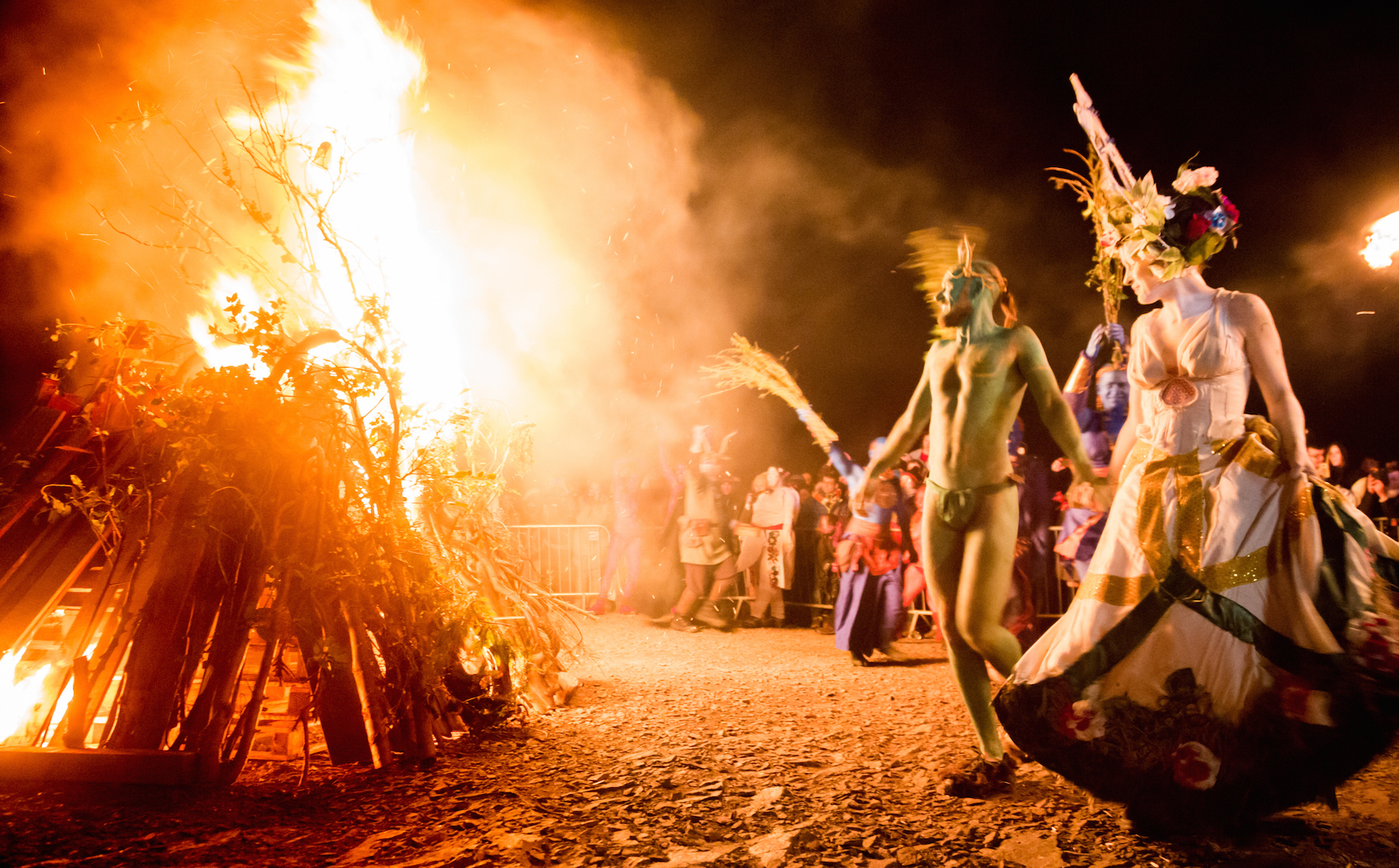








Pingback: How Midsommar’s May Queen Scene Connects To A Real Swedish Legend | All UR News en_CA
Pingback: Spring Equinox, the Eostre Bunny, and Other Wiccan Mysteries
Pingback: An ancient day of partying, pleasure – The Armijo Signal
Pingback: Sex Filled Calendar – Tingles Delight